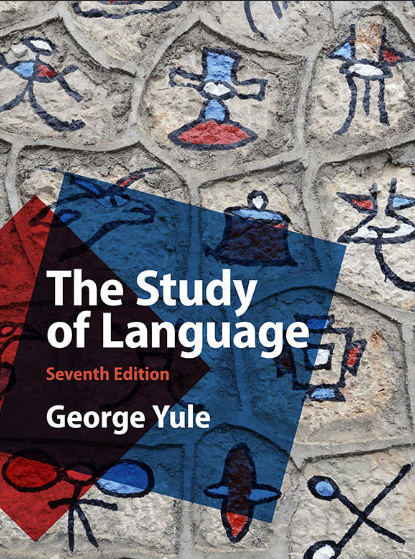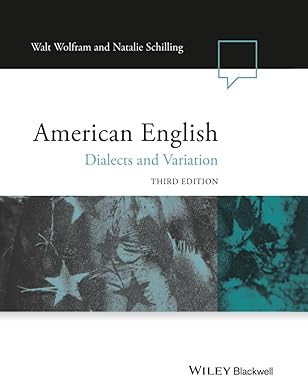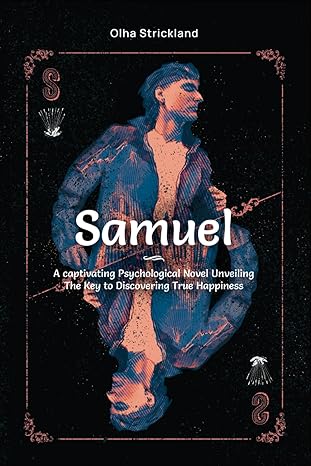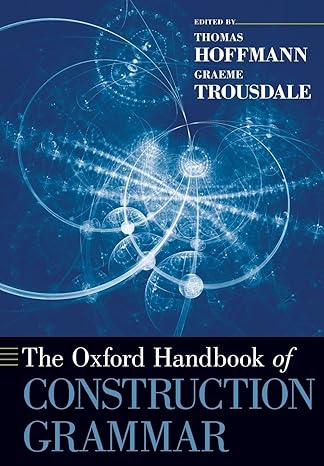This origin story from the lwaidja people of Australia, illustrated in the painting above, offers an explanation of not only where language came from, but also why there are so many different languages. Among the English-speaking people, there have been multiple attempts to provide a comparable explanation, but not much proof to support any of them. Instead of a belief in a single mythical earth mother, we have a variety of possible beliefs, all fairly speculative. We simply don't have a definitive answer to the question of how language originated. We do know that the ability to produce sound and simple vocal patterning (a hum versus a grunt, for example) appears to be in an ancient part of the brain that we share with all vertebrates, including fish, frogs, birds and other mammals. But that isn't human language. We suspect that some type of spoken language must have developed between 100,000 and 50,000 years ago, well before written language (about 5,000 years ago). Yet, among the traces of earlier periods of life on earth, we never find any direct evidence or artifacts relating to the speech of our distant ancestors that might tell us how language was back in the early stages, hence the multiple speculations. Closest to the lwaidja story are tales of gods blessing humans with the power of language. In the biblical tradition, as described in the book of Genesis, God created Adam and "whatsoever Adam called every living creature, that was the name thereof." Alternatively, following a Hindu tradition, it is Sarasvati, wife of Brahma, who is credited with bringing language to humanity. In most religions, there appears to be a divine source who provides humans with language. In an attempt to rediscover this original divine language, a few experiments have been carried out, with rather conflicting results. The basic hypothesis seems to have been that, if human infants were allowed to grow up without hearing any language around them, then they would spontaneously begin using the original God-given language. The Greek writer Herodotus reported the story of an Egyptian pharaoh named Psammetichus (or Psamtik) who tried the experiment with two newborn babies more than 2,500 years ago. After two years of isolation except for the company of goats and a mute shepherd, the children were reported to have spontaneously uttered, not an Egyptian word, but something that was identified as the Phrygian word bekos, meaning "bread." The pharaoh concluded that Phrygian, an older language spoken in part of what is modern Turkey, must be the original language. That seems very unlikely. The children may not have picked up this "word" from any human source, but as several commentators have pointed out, they must have heard what the goats were saying. (First remove the -kos ending, which was added in the Greek version of the story, then pronounce be- as you would the English word bed without -d at the end. Can you hear a goat?) King James the Fourth of Scotland carried out a similar experiment around the year 1500 and the children were reported to have spontaneously started speaking Hebrew, confirm ing the king's belief that Hebrew had indeed been the language of the Garden of Eden. About a century later, the Mogul emperor Akbar the Great also arranged for newborn babies to be raised in silence, only to find that the children produced no speech at all. It is unfortunate that Akbar's result is more in line with the real-world outcome for children who have been discovered living in isolation, without coming into contact with human speech. Very young children living without access to human language in their early years grow up with no language at all. This was true of Victor, the wild boy of Aveyron in France, discovered near the end of the eighteenth century, and also of Genie, an American child whose special life circumstances came to light in the 1970s (see Chapter 12). From this type of evidence, there is no "spontaneous" language. If human language did emanate from a divine source, we have no way of reconstructing that original language, especially given the events in a place called Babel, "because the Lord did there confound the language of all the earth," as described in Genesis (11: 9).
چکیده فارسی
این داستان منشأ از مردم لوایدجا استرالیا، که در نقاشی بالا نشان داده شده است، توضیحی را ارائه می دهد که نه تنها زبان از کجا آمده است، بلکه چرایی زبان های مختلف بسیار زیاد است. در میان افراد انگلیسی زبان، تلاشهای متعددی برای ارائه توضیحات قابل مقایسه صورت گرفته است، اما شواهد زیادی برای حمایت از هیچ یک از آنها وجود ندارد. به جای اعتقاد به یک مادر زمینی اسطوره ای مجرد، ما انواع باورهای ممکن را داریم که همگی نسبتاً حدس و گمان هستند. ما به سادگی پاسخ قطعی برای این سوال که زبان چگونه سرچشمه گرفته است نداریم. ما می دانیم که توانایی تولید صدا و الگوهای صوتی ساده (مثلاً زمزمه در مقابل خرخر کردن) به نظر می رسد در قسمت باستانی مغز است که ما با همه مهره داران از جمله ماهی، قورباغه، پرندگان و سایر پستانداران مشترک هستیم. اما این زبان انسان نیست. ما گمان می کنیم که نوعی از زبان گفتاری باید بین 100000 تا 50000 سال پیش، بسیار قبل از زبان نوشتاری (حدود 5000 سال پیش) توسعه یافته باشد. با این حال، در میان آثار دوره های اولیه زندگی بر روی زمین، ما هرگز هیچ مدرک یا مصنوع مستقیمی در رابطه با گفتار اجداد دورمان نمی یابیم که ممکن است به ما بگوید چگونه زبان در مراحل اولیه بازگشته است، از این رو حدس و گمان های متعدد وجود دارد. نزدیکترین داستان به داستان لوایدجا، داستانهای خدایان است که انسانها را با قدرت زبان برکت می دهند. در سنت کتاب مقدس، همانطور که در کتاب پیدایش شرح داده شده است، خداوند آدم را آفرید و «هر موجودی را که آدم نامید، نام آن بود». از سوی دیگر، پیروی از یک سنت هندو، این ساراسواتی، همسر برهما است که با آوردن زبان به بشریت اعتبار دارد. در بیشتر ادیان، به نظر می رسد که منبعی الهی وجود دارد که به انسان ها زبان می دهد. در تلاش برای کشف مجدد این زبان اصلی الهی، چند آزمایش انجام شده است که نتایج نسبتاً متناقضی داشته است. به نظر می رسد فرضیه اصلی این بوده است که اگر به نوزادان انسان اجازه داده شود بدون شنیدن هیچ زبانی در اطراف خود بزرگ شوند، آنگاه به طور خود به خود شروع به استفاده از زبان اصلی خدادادی خواهند کرد. هرودوت نویسنده یونانی داستان یک فرعون مصری به نام پسامتیکوس (یا پسامتیک) را گزارش کرد که بیش از 2500 سال پیش آزمایشی را با دو نوزاد تازه متولد شده انجام داد. پس از دو سال انزوا به جز همراهی بزها و یک چوپان لال، گزارش شده است که بچه ها به طور خود به خود، نه یک کلمه مصری، بلکه چیزی که به عنوان کلمه فریژی bekos به معنای «نان» شناخته شده است، به زبان آورده اند. فرعون به این نتیجه رسید که زبان فریجی، یک زبان قدیمی که در بخشی از ترکیه امروزی صحبت می شود، باید زبان اصلی باشد. که بسیار بعید به نظر می رسد. بچه ها ممکن است این "کلمه" را از هیچ منبع انسانی نگرفته باشند، اما همانطور که چندین مفسر اشاره کرده اند، حتما شنیده اند که بزها چه می گویند. (ابتدا پایان -kos را که در نسخه یونانی داستان اضافه شده است حذف کنید، سپس be- را مانند کلمه انگلیسی bed بدون -d در پایان تلفظ کنید. آیا صدای بز را می شنوید؟) پادشاه جیمز چهارم اسکاتلند آزمایش مشابهی را در حوالی سال 1500 انجام داد و گزارش شد که کودکان بطور خود به خود شروع به صحبت عبری کردند و این اعتقاد پادشاه را تأیید کرد که عبری واقعاً زبان باغ عدن بوده است. حدود یک قرن بعد، امپراتور مغول، اکبر کبیر نیز ترتیبی داد که نوزادان تازه متولد شده در سکوت بزرگ شوند، اما متوجه شد که کودکان اصلاً صحبت نمی کنند. مایه تاسف است که نتیجه اکبر بیشتر با نتیجه دنیای واقعی برای کودکانی که کشف شده اند در انزوا زندگی می کنند، بدون تماس با گفتار انسان، مطابقت دارد. کودکان بسیار کوچکی که در سالهای اولیه زندگی بدون دسترسی به زبان انسانی زندگی میکنند، بدون زبان بزرگ میشوند. این در مورد ویکتور، پسر وحشی آویرون در فرانسه، که در اواخر قرن هجدهم کشف شد، و همچنین در مورد جن، کودک آمریکایی که شرایط خاص زندگی اش در دهه 1970 آشکار شد، صادق بود (به فصل 12 مراجعه کنید). از این نوع شواهد، هیچ زبان "خود به خودی" وجود ندارد. اگر زبان بشری از منبع الهی سرچشمه گرفته باشد، ما هیچ راهی برای بازسازی آن زبان اصلی نداریم، به ویژه با توجه به وقایع مکانی به نام بابل، "زیرا خداوند در آنجا زبان تمام زمین را آشفته کرد"، همانطور که در پیدایش توضیح داده شده است. 11: 9).
ادامه ...
بستن ...
CAMBRIDGE
UNIVERSITY PRESS
University Printing House, Cambridge CB2 8BS, United Kingdom One Liberty Plaza, 20th Floor, New York, NY 10006, USA
477 Williamstown Road, Port Melbourne, VIC 3207, Australia
314-321, 3rd Floor, Plot 3, Splendor Forum, Jasola District Centre, New Delhi - 110025, India 79 Anson Road, 1t06-04/06, Singapore 079906
Cambridge University Press is part of the University of Cambridge.
It furthers the University's mission by disseminating knowledge in the pursuit of education, learning, and research at the highest international levels of excellence.
www.cambridge.org
Information on this title: www.cambridge.org/9781108499453 DOI: 10.1017/9781108582889
® George Yule 2020
This publication is in copyright. Subject to statutory exception and to the provisions of relevant collective licensing agreements, no reproduction of any part may take place without the written permission of Cambridge University Press.
First published 1985
Second edition 1996
Third edition 2006
Fourth edition 2010
Fifth edition 2014
Sixth edition 2017
Seventh edition 2020
Printed in Singapore by Markono Print Media Pte Ltd
A catalogue record for this publication is available from the British Library. Library of Congress Cataloging-in-Publication Data
Names: Yule, George, 1947- author.
Title: The study of language/ George Yule.
Description: Seventh edition. I New York, NY : Cambridge University Press, [2019] I Includes
bibliographical references and index.
Identifiers: LCCN 2019020553 I ISBN 9781108499453 (alk. paper) Subjects: LCSH: Language and languages. I Linguistics.
Classification: LCC Pl07 .Y85 2019 I DDC 401-dc23
LC record available at https://lccn.loc.gov/2019020553
ISBN 978-1-108-49945-3 Hardback
ISBN 978-1-108-73070-9 Paperback
Additional resources for this publication at www.cambridge.org/yule7
Cambridge University Press has no responsibility for the persistence or accuracy of URLs for external or third-party internet websites referred to in this publication and does not guarantee that any content on such websites is, or will remain, accurate or appropriate.
ادامه ...
بستن ...










